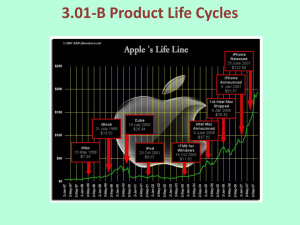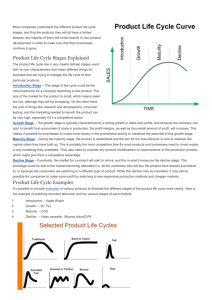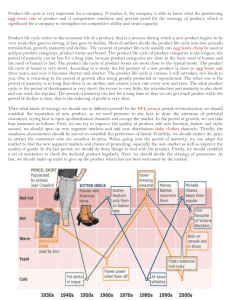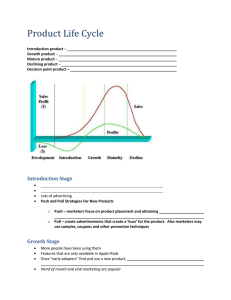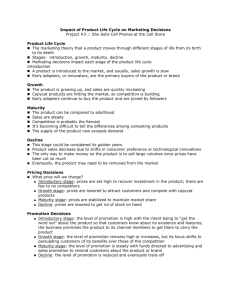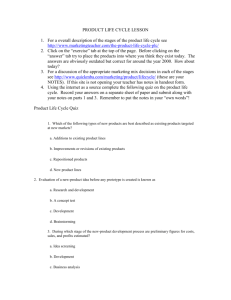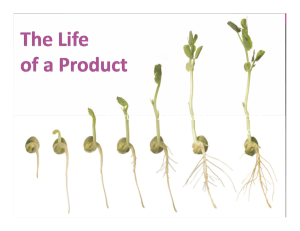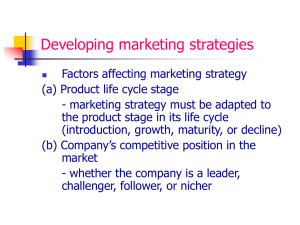Product Life Cycle.doc
advertisement
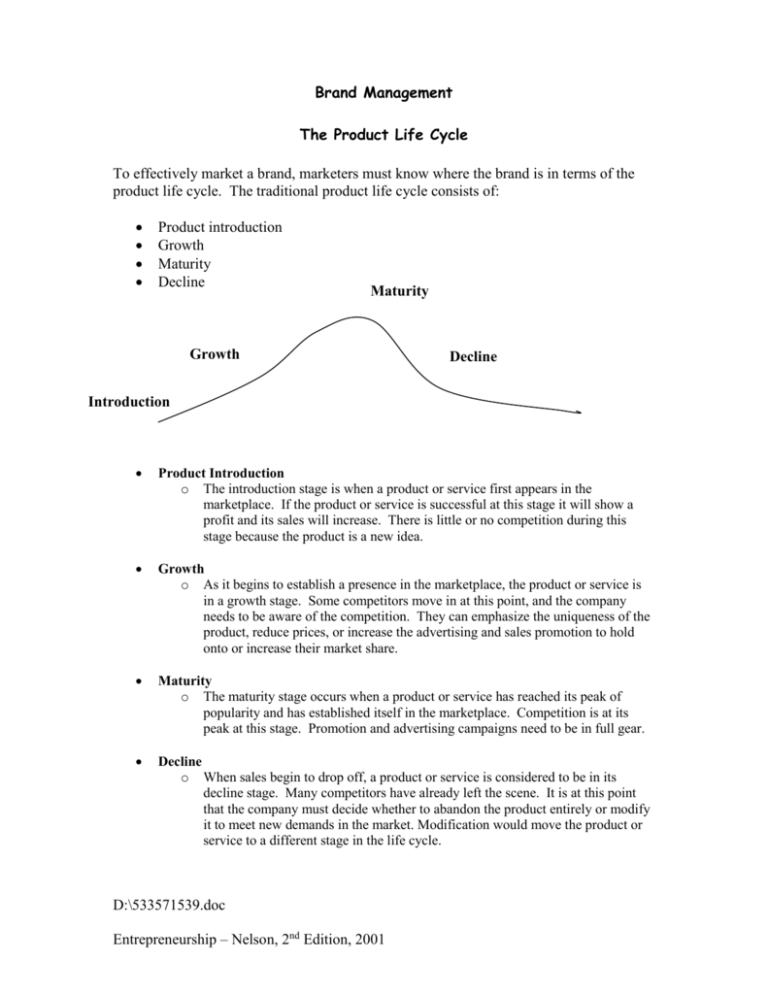
Brand Management The Product Life Cycle To effectively market a brand, marketers must know where the brand is in terms of the product life cycle. The traditional product life cycle consists of: Product introduction Growth Maturity Decline Maturity Growth Decline Introduction Product Introduction o The introduction stage is when a product or service first appears in the marketplace. If the product or service is successful at this stage it will show a profit and its sales will increase. There is little or no competition during this stage because the product is a new idea. Growth o As it begins to establish a presence in the marketplace, the product or service is in a growth stage. Some competitors move in at this point, and the company needs to be aware of the competition. They can emphasize the uniqueness of the product, reduce prices, or increase the advertising and sales promotion to hold onto or increase their market share. Maturity o The maturity stage occurs when a product or service has reached its peak of popularity and has established itself in the marketplace. Competition is at its peak at this stage. Promotion and advertising campaigns need to be in full gear. Decline o When sales begin to drop off, a product or service is considered to be in its decline stage. Many competitors have already left the scene. It is at this point that the company must decide whether to abandon the product entirely or modify it to meet new demands in the market. Modification would move the product or service to a different stage in the life cycle. D:\533571539.doc Entrepreneurship – Nelson, 2nd Edition, 2001 Non-Traditional Product Life Cycles Fads A fad is a product that is extremely popular for a very short period of time. Fads that have occurred over the past few years are: o Pet Rocks, Cabbage Patch Kids, Tickle Me Elmo, Mood Rings, Hula Hoops Companies can make or lose a great deal of money on fads. If a business can sell most of its stock and get out of the market for this product just before it reaches its peak, the business will make an excellent profit. When a fad dies, it dies with very quickly, and many businesses get caught with a large product inventory that no one wants to buy. Sales Time Niches Some products have a very short growth stage that leads to a solid, but not financially spectacular, maturity stage. These products have a niche – a section of the market in which they dominate and into which very few competitors enter. Niche marketers usually invent their products and hold exclusive patents or formulas. o Specialized parts Sales Time Seasonal Seasonal products are products that are popular during the particular season. o Christmas trees, Chocolate Easter Bunnies Businesses must keep adequate inventory to meet seasonal demand. But have to get rid of it by the end of the season. If they have too much inventory left over at the end of the season, many of the products will be out of style when the season starts again the next year. This balancing of product quantity with sales is called inventory management. Sales Time D:\533571539.doc Entrepreneurship – Nelson, 2nd Edition, 2001

